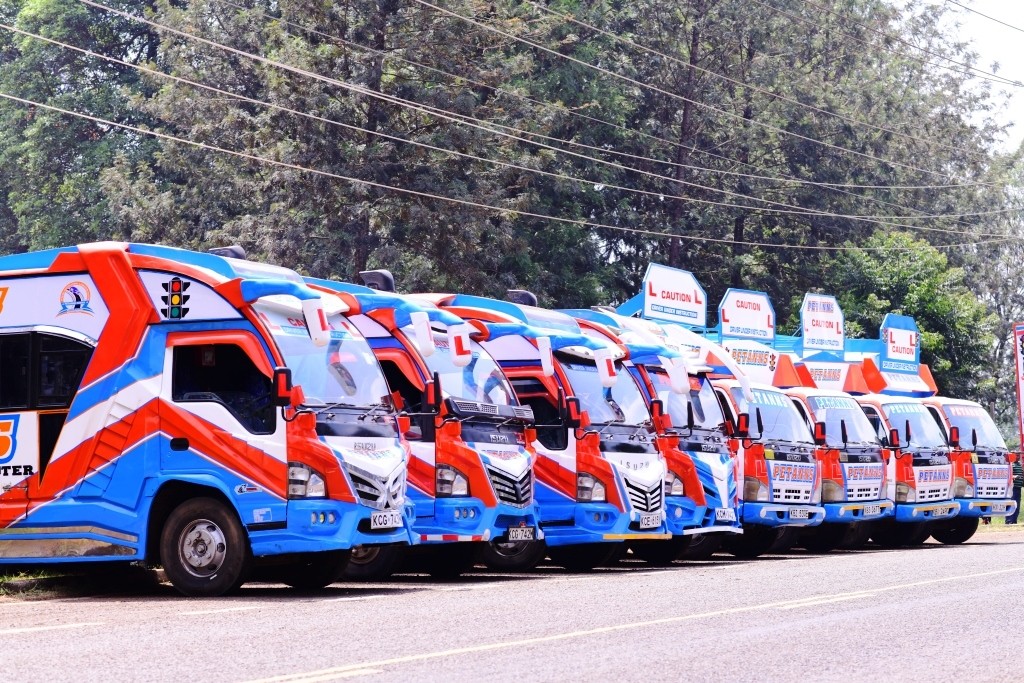In Kenya, obtaining a driving license is a significant milestone, marking the transition to independence and responsibility on the road. The National Transport and Safety Authority (NTSA) oversees the driving test process, ensuring that all drivers meet the required standards for road safety. For many, the NTSA driving test can be daunting, with its mix of theoretical and practical components designed to assess a candidate’s knowledge and skills. This comprehensive guide explores the most common NTSA driving test questions and answers, offering practical tips, insights, and preparation strategies to help you pass with confidence. Whether you’re a first-time driver or refreshing your knowledge, this article is your go-to resource for mastering the NTSA driving test in 2025.
Understanding the NTSA Driving Test Structure
The NTSA driving test in Kenya is divided into two main components: the theory test and the practical test. Both sections are designed to evaluate a candidate’s understanding of road rules, vehicle handling, and safety practices. Below, we break down each component to give you a clear picture of what to expect.
The Theory Test: Road Rules and Safety Knowledge
The theory test assesses your understanding of the Highway Code, traffic regulations, and road safety principles. Administered through the NTSA’s e-Citizen platform or at designated testing centers, it typically consists of multiple-choice questions. Passing the theory test is a prerequisite for proceeding to the practical test.
The Practical Test: Demonstrating Driving Skills
The practical test evaluates your ability to operate a vehicle safely and competently. Conducted by an NTSA examiner, it involves real-world driving scenarios, including navigating traffic, parking, and responding to road signs. The test is rigorous, ensuring that only those who demonstrate safe driving habits earn their license.
Common NTSA Theory Test Questions and Answers
The theory test covers a wide range of topics, from road signs to traffic laws and vehicle maintenance. Below are some of the most frequently asked questions, along with their answers, to help you prepare effectively.
Road Signs and Their Meanings
Road signs are a critical component of the NTSA theory test. You’ll need to identify various signs and understand their implications. Here are some common questions:
- What does a red triangular sign with a white background indicate?
Answer: This is a warning sign, alerting drivers to potential hazards such as sharp curves, pedestrian crossings, or roadworks. For example, a triangle with a cow image warns of possible animal crossings. - What is the meaning of a circular blue sign with a white arrow pointing right?
Answer: This is a mandatory instruction sign, indicating that vehicles must turn right. - What does a yellow diamond-shaped sign signify?
Answer: It indicates priority for the road you are on, meaning vehicles on intersecting roads must yield.
Preparation Tip: Memorize the shapes and colors of road signs (e.g., triangles for warnings, circles for mandatory instructions, and rectangles for information). Use NTSA-approved resources or mobile apps like the NTSA Driving School app to practice.
Traffic Rules and Regulations
Understanding Kenya’s traffic laws is essential for passing the theory test. Here are some commonly tested questions:
- What is the speed limit in urban areas unless otherwise indicated?
Answer: The speed limit in urban areas is 50 km/h for all vehicles unless a different limit is posted. - When should you use your vehicle’s horn?
Answer: Use the horn only to alert other road users of your presence in situations where it’s necessary to avoid danger, such as at blind corners. Unnecessary hooting is prohibited. - What should you do when approaching a zebra crossing with pedestrians?
Answer: Slow down, stop if necessary, and allow pedestrians to cross safely before proceeding.
Preparation Tip: Study the Kenya Traffic Act and the NTSA’s Highway Code booklet. Pay attention to rules specific to Kenya, such as matatu regulations and boda boda right-of-way.
Vehicle Safety and Maintenance
The theory test also evaluates your knowledge of vehicle maintenance and safety checks. Sample questions include:
- What should you check before starting a long journey?
Answer: Ensure the vehicle’s tires, brakes, lights, wipers, and fluid levels (oil, coolant, brake fluid) are in good condition. Also, verify that the spare tire and jack are functional. - What is the purpose of a catalytic converter?
Answer: It reduces harmful emissions by converting toxic gases into less harmful substances. - When should you replace worn-out tires?
Answer: Replace tires when the tread depth is below 1.6 mm or when there are visible signs of damage like cuts or bulges.
Preparation Tip: Familiarize yourself with basic vehicle components and their functions. Practical knowledge, such as checking tire pressure or oil levels, can also help during the practical test.
Common NTSA Practical Test Scenarios and Tips
The practical test is where your driving skills are put to the test. Conducted on public roads, it assesses your ability to handle a vehicle in real-world conditions. Below are common scenarios and tips to excel.
Starting and Moving Off
The examiner will observe how you start the vehicle and move into traffic. Common requirements include:
- Checks: Perform the “cockpit drill” (adjusting mirrors, seat, and seatbelt) before starting the engine.
- Clutch Control: For manual vehicles, demonstrate smooth clutch engagement to avoid stalling.
- Observation: Check blind spots and signal appropriately before moving off.
Example Scenario: You’re asked to start the vehicle and join a busy road in Nairobi.
Tip: Use the MSM routine (Mirror, Signal, Maneuver). Check your side mirrors, indicate your intention, and ensure it’s safe before pulling out.
Navigating Intersections and Roundabouts
Intersections and roundabouts are common test areas, especially in urban centers like Nairobi or Mombasa. Key points include:
- Right of Way: Yield to vehicles with priority, such as those on major roads or already in the roundabout.
- Lane Discipline: Stay in the correct lane for your intended direction (e.g., left lane for left turns).
- Signaling: Indicate your direction early and clearly.
Example Scenario: You approach a roundabout with multiple exits.
Tip: Observe road signs and lane markings. If exiting left, stay in the outer lane and signal left. For right exits, use the inner lane and signal right until you’re ready to exit.
Parking and Reversing
Parking tests your precision and control. Common tasks include parallel parking and reversing into a bay.
- Parallel Parking: Align your vehicle with the car in front, reverse slowly, and use reference points to judge distance.
- Reversing: Check all mirrors and blind spots, and reverse smoothly without hitting obstacles.
Example Scenario: You’re asked to parallel park between two vehicles.
Tip: Practice the 45-degree angle technique: align your vehicle’s rear with the front car’s bumper, turn the wheel fully, and reverse until the car is parallel.
Handling Traffic and Emergencies
The examiner may test your ability to react to traffic conditions or emergencies, such as:
- Stopping Safely: Come to a controlled stop when instructed, using mirrors and signals.
- Hazard Perception: Identify and respond to hazards like pedestrians, boda bodas, or stray animals.
- Emergency Stop: Brake firmly and safely when prompted, without locking the wheels.
Example Scenario: A pedestrian suddenly crosses the road.
Tip: Slow down gradually, stop if necessary, and avoid sudden swerves. Always prioritize pedestrian safety.
Penalties and Common Mistakes to Avoid
Failing to adhere to traffic rules or making critical errors can lead to an automatic fail. Common traffic offenses in Kenya include obstruction (Ksh. 10,000 fine) and driving without a valid license (Ksh. 7,000 fine). Here are mistakes to avoid during the test:
- Ignoring Road Signs: Failing to stop at a stop sign or misinterpreting a yield sign.
- Poor Observation: Not checking mirrors or blind spots before maneuvers.
- Speeding: Exceeding the speed limit, especially in school zones or urban areas (50 km/h).
- Stalling the Vehicle: Repeatedly stalling due to poor clutch control in manual cars.
- Incorrect Positioning: Straddling lanes or incorrect lane changes.
Tip: Practice with a qualified instructor at an NTSA-approved driving school to build confidence and correct bad habits early.
How to Prepare for the NTSA Driving Test in 2025
Preparation is key to passing the NTSA driving test. Here’s a step-by-step guide to ensure success:
- Enroll in an NTSA-Approved Driving School: Choose a reputable school with experienced instructors.
- Study the Highway Code: Use the NTSA’s official Highway Code booklet or online resources to master road signs, rules, and safety practices.
- Practice Mock Tests: Take advantage of online platforms or apps offering NTSA theory test simulations. These mimic the real test format and help identify weak areas.
- Gain Practical Experience: Log at least 20-30 hours of supervised driving practice, focusing on urban and rural roads, parking, and emergency maneuvers.
- Schedule Your Test Early: Book your test through the NTSA TIMS portal on e-Citizen to avoid long waiting times, especially in busy centers like Nairobi.
- Stay Calm on Test Day: Arrive early, bring all required documents (ID, learner’s permit), and stay composed during the test.
Passing the NTSA driving test is a critical step toward becoming a responsible driver in Kenya. By mastering common theory questions, practicing essential driving skills, and avoiding frequent mistakes, you can approach the test with confidence. Use this guide to familiarize yourself with road signs, traffic rules, and practical scenarios, and leverage NTSA-approved resources for thorough preparation. With dedication and practice, you’ll be well-equipped to earn your driving license and navigate Kenya’s roads safely in 2025.





